

James Wong
2026 Audi SQ5 review: Quick drive
6 Days Ago
We sit down with the head of product communications for automotive systems at Bose to discuss the current and future state of car audio

Tech Contributor
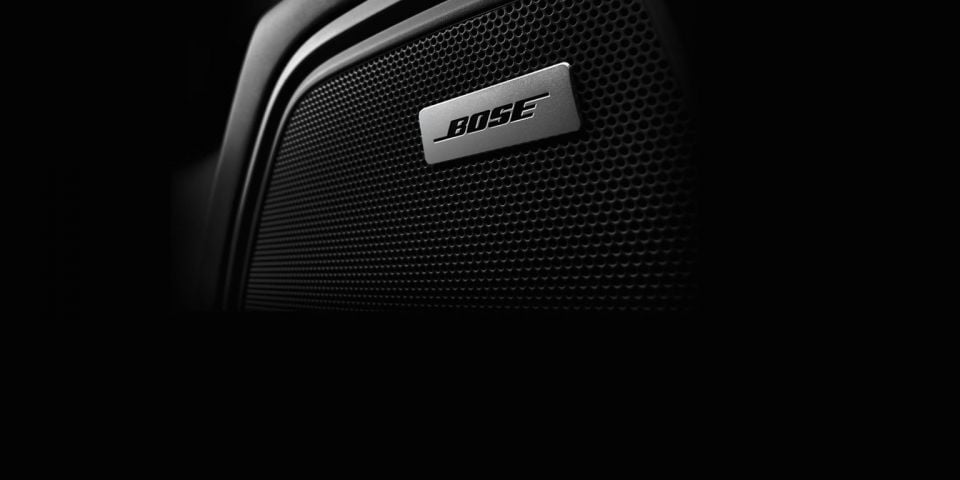

Tech Contributor
The audio in our cars has started to match or even exceed what we experience at home. With carmakers teaming up with with well-known brands such as Bose, Bowers & Wilkins, and Bang and Olufsen, we’re seeing how that in-home reputation can sway your decision to choose an upgraded audio system in a new car.
Innovation in the automotive audio space has been noticeable in recent years, and there is much more to come.
We spent a morning with John Pelliccio, head of product communications for automotive systems at Bose, to find out what we can look forward to in tomorrow’s cars. Audio of the full interview is at the bottom of the story.
Bose has been in vehicles since the early 1980s, having first appeared in the 1982 Cadillac Seville. Thinking about how cars are advertised in 2020, there’s often very little talk about the power, engines, and even whether it’s front or rear-wheel drive.
Instead, as Pelliccio reminds us, cars are being advertised as the best piece of technology you’ll own – even if it’s a piece of tech that will sit in your driveway, not your living room.
Until now, Bose has largely played the role of projecting your music. It develops an audio system that plays back – and allows you to enjoy – whatever you choose to listen to.
However the company has started to pivot towards enabling audio in all areas of your life, whether it’s communicating with each other or listening to music wherever you are. It’s trying to blur the lines between devices used in one situation or another.
According to John, much of this started by using a car’s audio system to help make the engine sound better in the cabin. On the flipside, Bose can also work with carmakers to help them remove engine noise from the cabin.
What is next in the cabins of our vehicles?
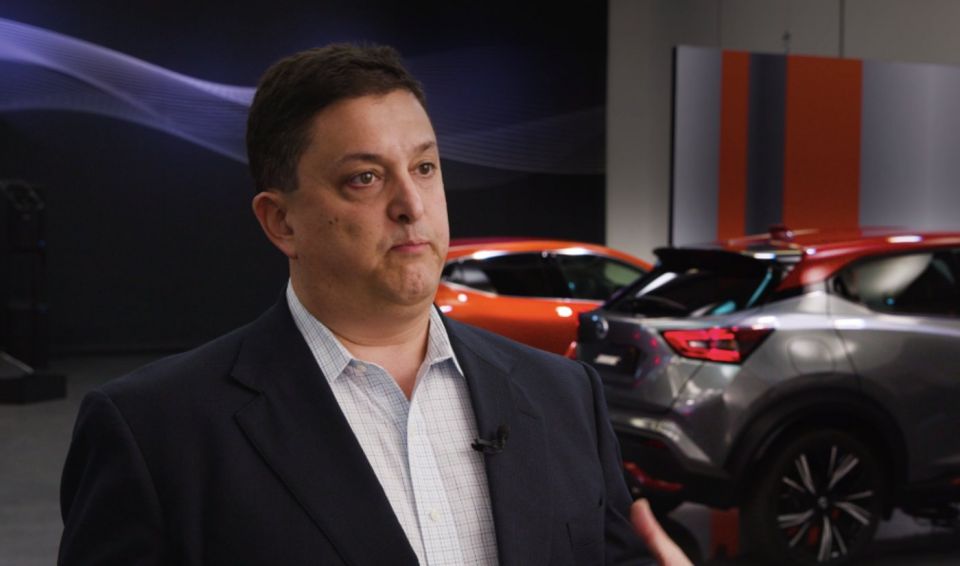
Pelliccio tells CarExpert SeatCentric Experience will allow each passenger to have their own ‘listening zone’ without interfering with others.
This uses ultra-near-field speakers mounted in the car’s headrests, which can provide that seat’s occupant with their own left and right ear audio inputs. While some vehicles are already using speakers in the headrests, particularly convertibles, they aren’t being leveraged to provide the individual experience Bose is referring to.
“If you were in a shared situation where you were driving around – maybe in an Uber Pool or in a vehicle where you didn’t necessarily know that people who sat next to you – there are opportunities for us to be able to do things like limit the sounds that are being heard to an individual seat, and not the entire cabin,” Pelliccio said.
We’re already wondering how much longer until we won’t need to hear the phone conversation our taxi driver is having.
Pelliccio also sees these targeted audio experiences being beneficial when the car needs to inform the driver or something, such as with navigation instructions, without disturbing the passengers.
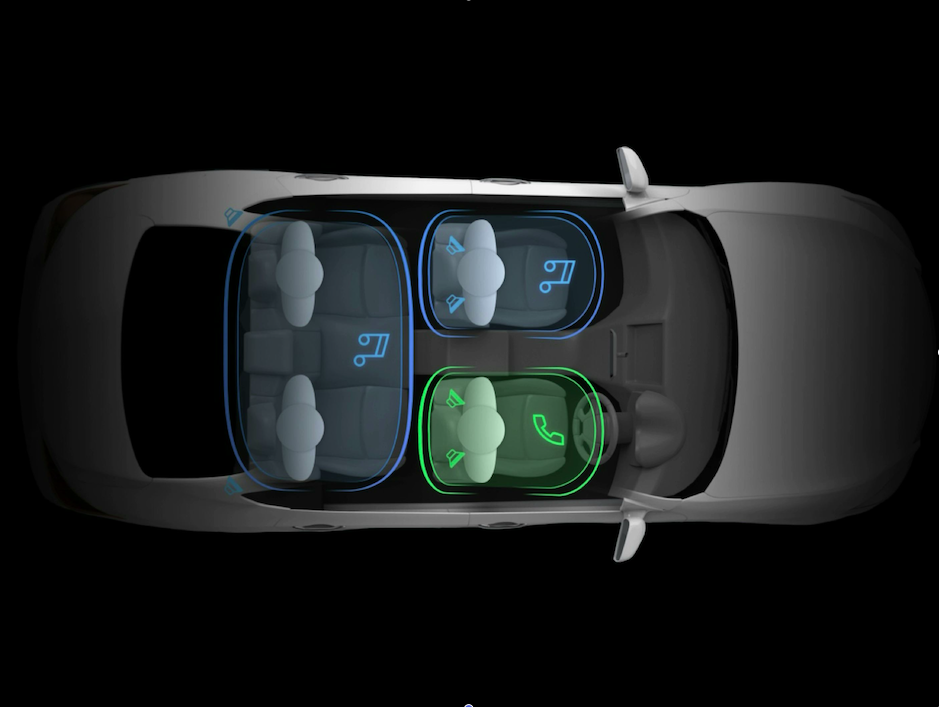
With navigation, a left turn announcement could play to your left ear to give an audible sense of which direction you need to turn. The same applies for blind spot notifications.
“If a vehicle is in your blind spot on the right, then you should hear about it over your right shoulder, not from the centre of the car,” Pelliccio added.
Continuing on targeted phone calls, John added you could be able to “pass” a call from seat-to-seat if necessary.
Whether it be work, your mum, or friends, you could take the call while others in the car enjoy their music.
When it comes to the music, targeting individual seats means the volume could also be at different levels so “the kids could rock out to whatever they wanted to in the back and then, my wife and I could have a conversation at a normal volume in the front”.
While Bose has ideas and prototypes, carmakers need to want it and be able to implement it – without making cars prohibitively expensive.
Firstly, Bose connects and works closely with suppliers such as those making the seats, to ensure their next product can be easily integrated into their parts.
Inside carmakers, different teams are competing to source parts for the interior or exterior within their budget.
Pelliccio tells CarExpert about an exchange where a carmaker “had to argue with his exterior designers and have them remove some chrome from the outside of the car so that they could support the addition of one of these audio experiences on the inside of the car”.
The other factors for consideration include engineering feasibility, technical viability, and crash testing, especially when it comes to speakers in the headrests.
Frames are a pair of Bose sunglasses with small Bluetooth speakers built into their arms, firing sound down into your ears.
We discussed how these could be integrated into the car. It could start with Frames working to improve the audio system in your car, Bose or otherwise.
The glasses could perform a similar role to headrest-mounted speakers. John foresees how this could improve the basic sound system as “the combination of the sound system and the Frames making the sound system in the car elevate the soundstage, and make everything sound a little more premium”.
Because the Frames are also personal listening devices you could receive navigation or vehicle notifications directly, allowing other passengers to listen to music uninterrupted.
But Pelliccio sees the biggest benefit of the integration being continuity, allowing people to take their audio away from the car at journey’s end without having to manually switch devices.
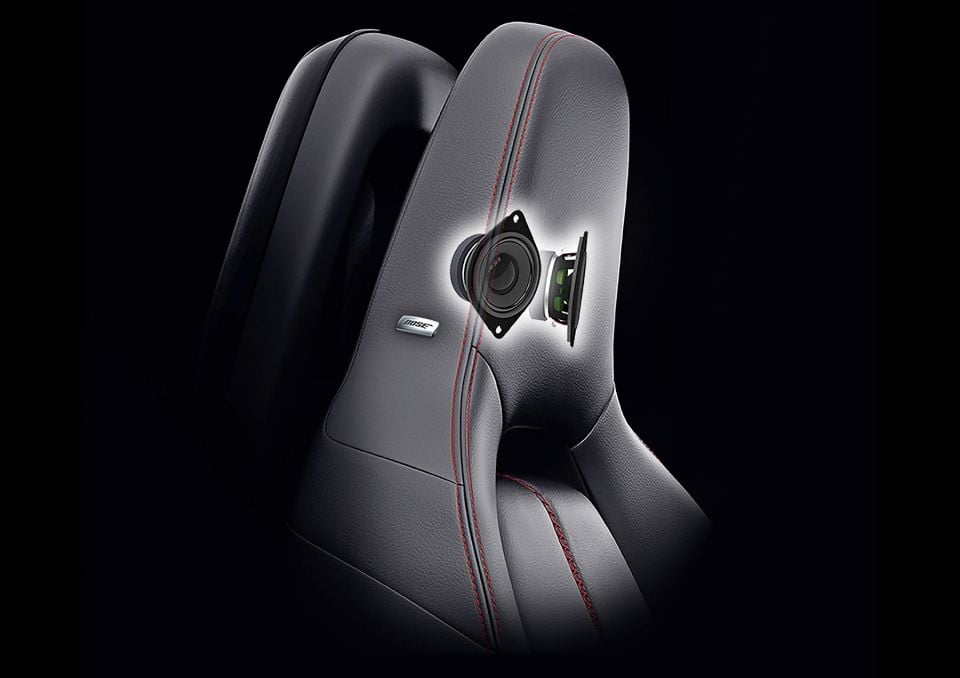
Potentially the simplest idea to implement – and most likely to reach consumers soon – is allowing your existing headphones to be added to the car audio experience.
It would mean the kids in the back can wear headphones and watch something on a tablet, but still be part of the vehicle. It means you could interrupt their audio with a question about whether they need to use the bathroom, for example.
Drivers could keep their eyes on the road, and don’t need to yell and compete with the headphones. Life goes on.
John calls this feature Car Wear, which could be added to infotainment systems and allow drivers to broadcast to the cabin like an airline pilot.
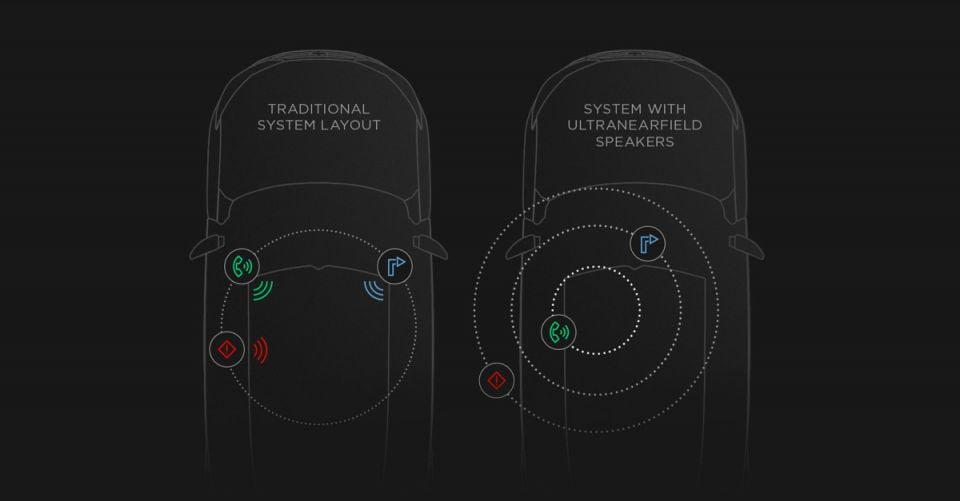
The challenge Bose sees is, as a society, we’re used to buying something today and having it improve over its life.
“An iPhone you buy today will do cooler newer things next year because of the iOS updates and historically cars don’t work that way,” Pelliccio says.
With over-the-air updates, it allows Bose to think differently and plan hardware for what it will do next. You can then expect cars you buy over the next few years with a premium audio package, such as Bose, will be constantly upgraded to ensure they’re always improving.
The plan from Bose is for your hardware to gradually gain capability through the car’s life, so the headrest speakers go from offering up-close surround sound to offering something more flashy through an over-the-air update.
“There’s so much untapped potential there,” Pelliccio said.
“Think about all the things you listen to when you’re driving that aren’t music and understand that through the benefit of things like near field speakers, you’ve actually got the ability now to control that whole acoustic environment.”


James Wong
6 Days Ago


Max Davies
5 Days Ago


Josh Nevett
3 Days Ago


Max Davies
3 Days Ago


Max Davies
2 Days Ago


Derek Fung
2 Days Ago